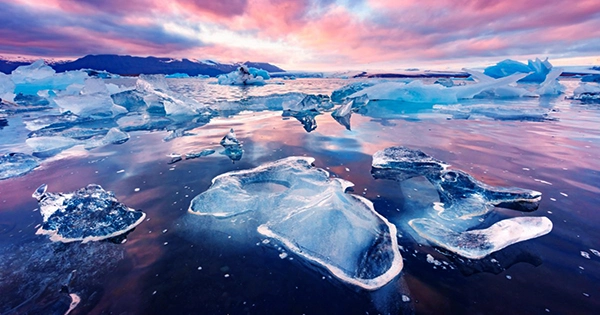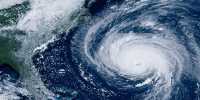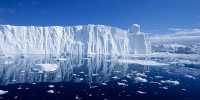On March 18, extreme heatwaves erupted at both poles, with one Antarctic weather station registering temperatures 40 degrees Celsius (70 degrees Fahrenheit) above average and areas of the Arctic 30 degrees Celsius (50 degrees Fahrenheit) higher than they should be. Strange weather phenomena like this have grown more common in recent years, but for both poles to suffer excessive heat at the same time is exceedingly rare and frightening. The start of autumn in the Southern Hemisphere is usually accompanied by a drop in temperature over Antarctica, whereas early spring is usually accompanied by a gradual climb in Arctic temperatures.
Seeing such massive increases in both locations at this time of year has generated a lot of consternation among climate experts. “The seasons are diametrically opposed. You don’t observe the poles (north and south) melting at the same moment “The National Snow and Ice Data Center in Boulder, Colorado, is led by Walt Meier. He told the Associated Press, “It’s absolutely a unique event.” Several meteorological stations recorded very unusual temperatures, with the Concordia station in Antarctica reaching -12.2°C, which is 40 degrees warmer than typical at this time of year. Meanwhile, the high-altitude Vostok station hit -17.7°C, shattering its previous record by 15°C.
Temperatures at the Terra Nova station in Antarctica reached far above freezing, with the temperature reaching 7°C. Meanwhile, weather sensors near the North Pole reported temperatures not seen until the height of summer, with some readings exceeding 30 degrees Celsius above the typical for this time of year. These violent heatwaves, according to Mark Maslin, professor of earth system science at University College London, “suggest we have reached a new extreme phase of climate change considerably sooner than we had projected,” according to The Guardian.
In a more upbeat tone, Meier suggested that the unusually warm weather in Antarctica may be a chance occurrence produced by “a vast atmospheric river” of warm air, rather than an indication of faster climate change. Scientists believe, however, that a repeat of this occurrence would be disastrous for the globe, and that the impact of two simultaneous heatwaves might deepen the climate problem. By reflecting sunlight, Arctic ice helps to keep the world cold. However, as temperatures rise, more of this ice is melting, enabling the darker ocean or land beneath to absorb more of the Sun’s heat.
Meanwhile, melting ice in the Antarctic is likely to contribute to an increase in global sea levels. Summer sea ice in Antarctica hit its lowest level ever last month, and other projections suggest that the Arctic might be ice-free in summer by the middle of the next decade. We can only hope for a smaller-than-expected Arctic melt this year in the Northern Hemisphere summer.















